Theory and Practice: Integrated Studies and the Visual Arts
Approaching van Dyck
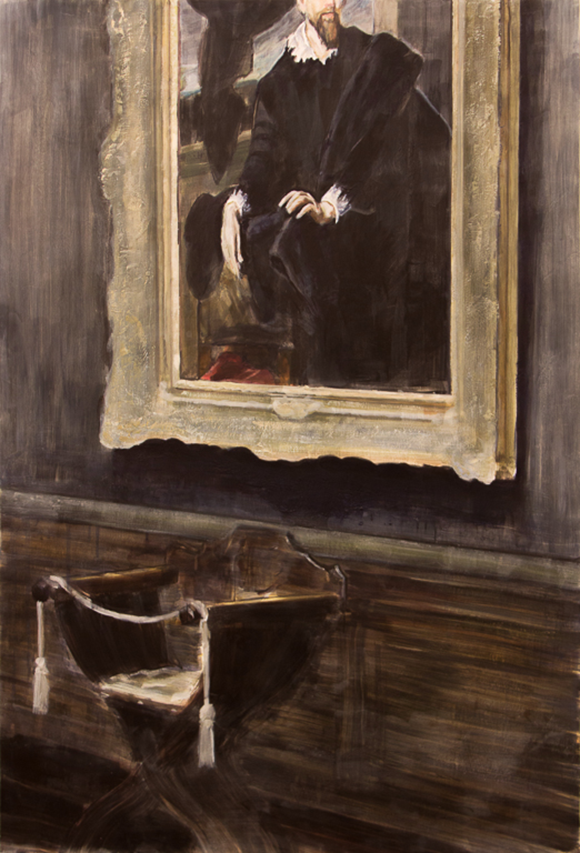
Watercolour & Encaustic on Panel, 60” x 48”, 2013
Neil McClelland
Picture a crystal ball. Etched on one side is the word “Theory”, and on the other is “Practice”. This is an artwork by Wyn Geleynse, who lives and works in London, Ontario, and who recently visited the University of Victoria as a guest artist. This ball can be seen as a lens through which to view the world and culture, and when you roll it along a surface, the theory and practice sides alternate, reminding you that they are really two sides of the same thing.
I was invited to write this piece to share my experiences with taking Athabasca University’s Master of Arts - Integrated Studies (MA-IS) degree concurrently with a Master of Fine Arts (MFA) in Visual Arts at the University of Victoria. The MA-IS program has enabled me to immerse myself in theory and for the MFA I’ve immersed myself in studio practice. In both degrees, I’ve been encouraged to understand the interrelationships between theory and practice. I had been pursuing the MA-IS part time while working as a professional artist, with the goal of acquiring a theoretical framework that would help inform the work I do as a painter, but I began to feel the need to supplement this inquiry with participation in the formal community of studio practice that an MFA can provide.
The MFA Visual Arts program at the University of Victoria is a studio-based degree, meaning that there are no art history, theory, or reading courses, and no written assignments. We meet once a week for group discussion and individually with a supervising faculty member for guidance and advice. Visiting artists are invited to give a public lecture, speak with the MFA candidates as a group in seminar, and then visit our studios individually. On our own, we are expected to read, think and prepare for our final oral defense. Then, at the end of two years, we present our final exhibition of our work and we are expected to talk intelligently about the work and how it connects to the larger conversation, about what we think it means and why it matters.
I applied to the MFA program as a painter who has undergraduate degrees in music and education. Because I did not have the expected Bachelor of Fine Arts degree when I entered the MFA, I was worried that I would not be adequately prepared. At first I was told that I would have to take some advanced Art History and Theory credits, but then my MA-IS transcripts were assessed and I was granted the credits. I soon realized that my MA-IS courses have prepared me quite well because many of the theorists I’d been reading—Derrida, Foucault, Lacan, Lyotard, Bourdieu, Barthes, Benjamin and others—are part of the art school conversation.For my MFA I’ve been engaging with the tradition of painting, how artworks are presented in gallery and museum spaces, and how viewers are positioned physically and cognitively in relation to the cultural objects in these spaces. Husserl, Merleau-Ponty and the field of phenomenology are becoming important to me as a theoretical framework to help me understand the work I am doing. The distortions, odd angles, cropping, and loose handling of materials in my paintings are intended to disrupt viewers’ habitual ways of looking at a painting hanging in a gallery space. The idea is to defamiliarize the somewhat familiar, to get viewers to call into question their spontaneous perceptual organization of visual information. Perception is informed by past looking experiences, and increasingly viewers’ experiences of visual culture are mediated by digital technologies. I want my paintings to acknowledge new ways of looking at art, informed by virtual tours and zooms, while at the same time emphasizing the physicality of painting.
My thesis exhibition and oral defense will happen this spring. I still have a number of MA-IS courses left, as well as the final project. A couple of years ago MAIS 621, Narrative Possibilities, had a significant effect on my painting. The personal narrative focus of the course ended up being a central theme in my exhibition, and the paintings in turn influenced the writing I did for the course. I hope and expect that on a larger scale the theory and practice in both degrees will influence and inform each other.
Contemplation, Room 30
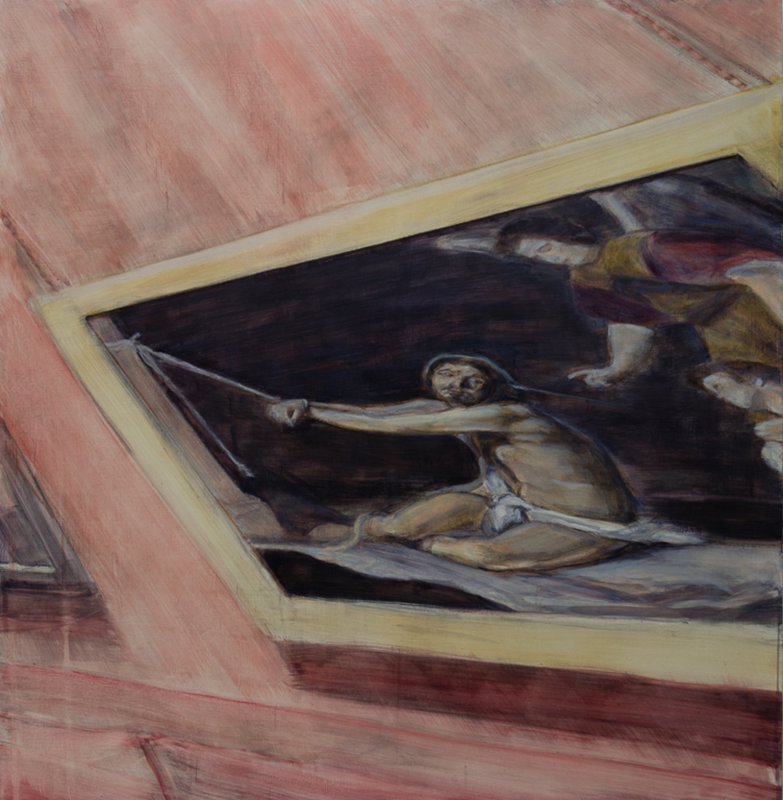
Watercolour & Encaustic on Panel, 48” x 46.5”, 2013
Van Gogh’s Chair I
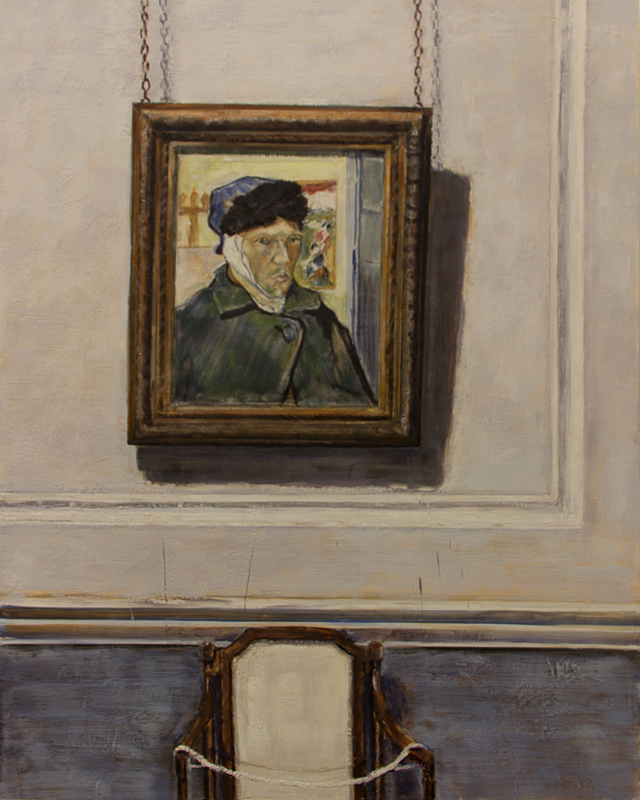
Watercolour & Encaustic on Panel, 60” x 48”, 2013
Viewing St Sebastian, Room 24
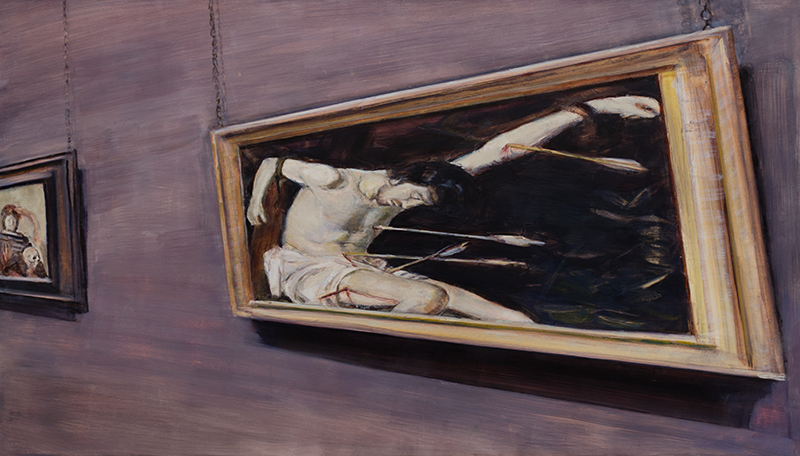
Watercolour & Encaustic on Panel, 34” x 60”, 2013
Viewing Venus, Room 30
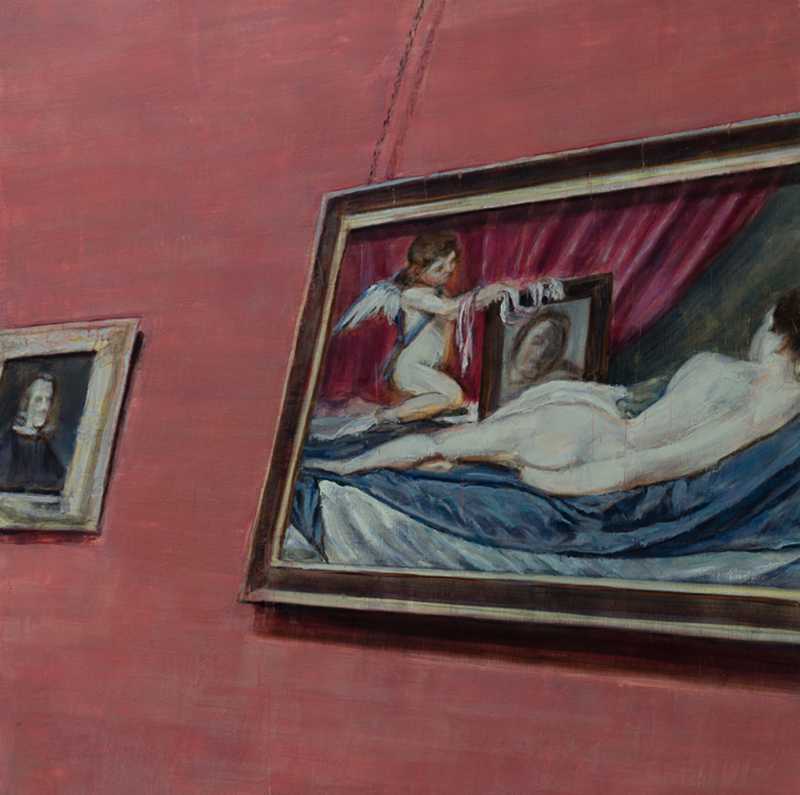
Watercolour & Encaustic on Panel, 48” x 48”, 2013